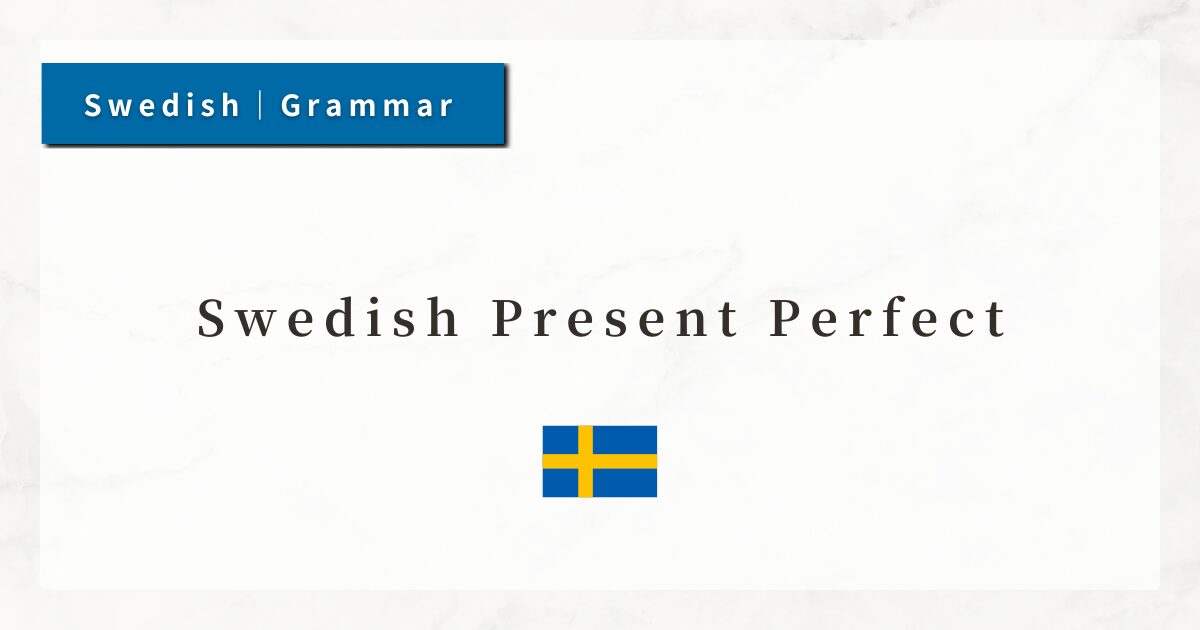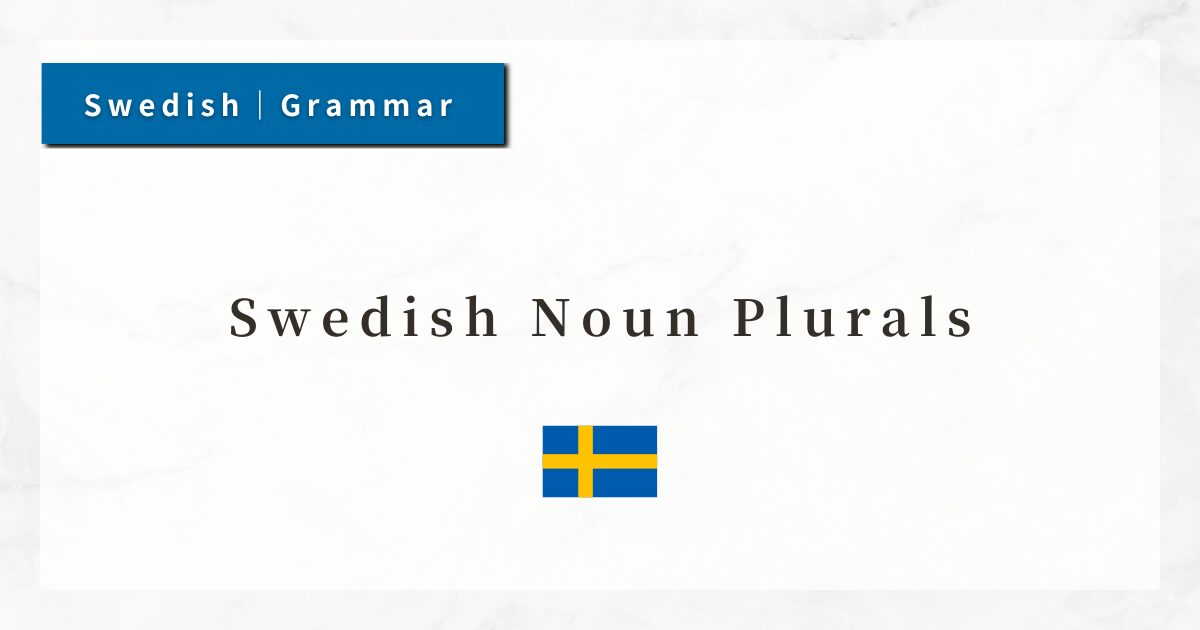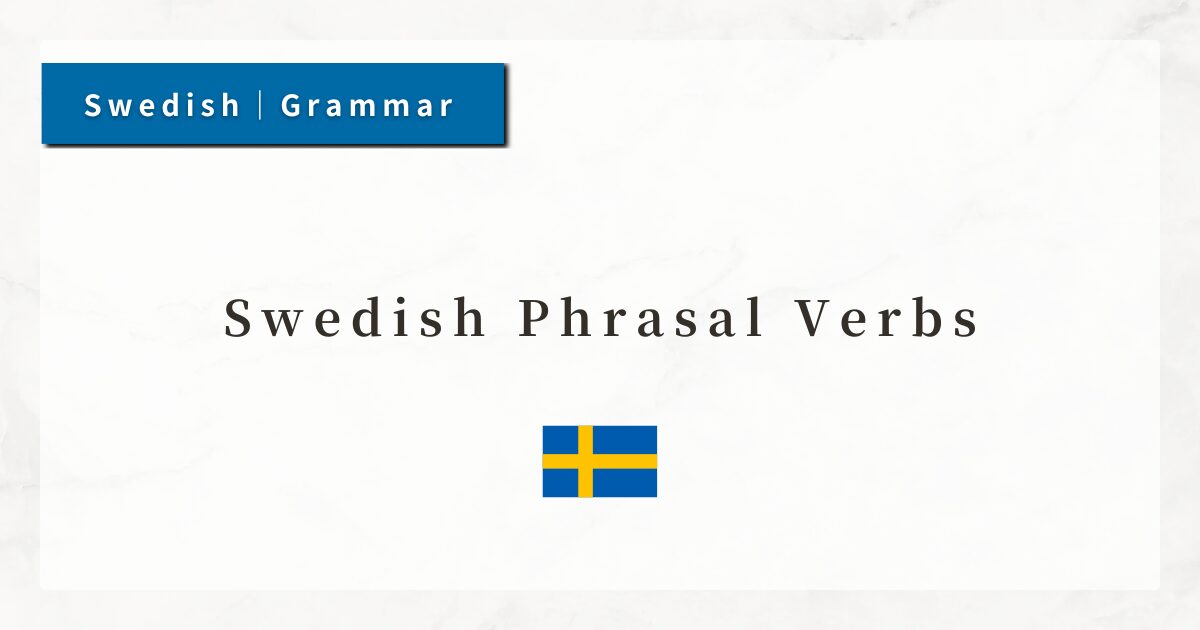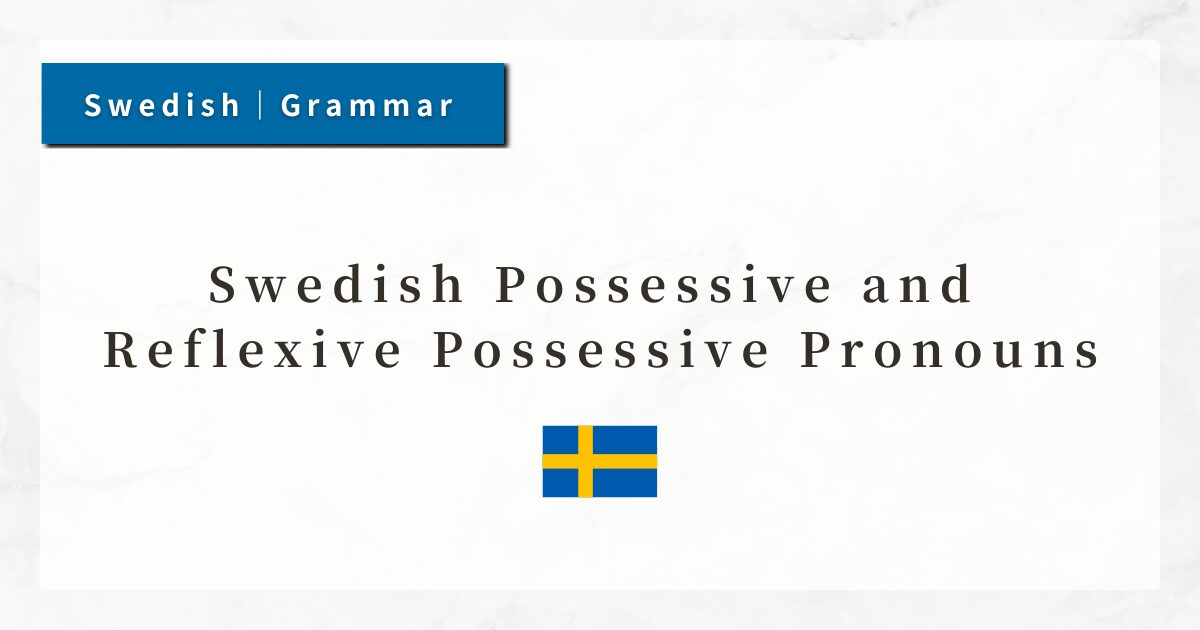#29 Swedish Present Perfect|Basic Rules and Conjugation Summary

In Swedish, the present perfect tense is used when something that happened in the past still has an effect or relevance in the present.
It corresponds to the English present perfect tense (have + past participle), and is useful for expressing ideas such as “have just done” or “have ever done”.
In this lesson, I will explain how to form the present perfect in Swedish, and the main patterns in which it is used.
1. Structure of the Present Perfect
The Swedish present perfect tense expresses actions that occurred in the past but are still connected to the present.
Its structure is: “Subject + auxiliary har + supine form of the verb.”
The auxiliary har is the present tense of ha (to have).
The Swedish present perfect (har + supine) is very similar to the English present perfect (have + past participle). However, unlike English, Swedish always uses har for all subjects—there is no distinction between has and have.
2. How to Form the Supine
The form used in the present perfect is called the supine (supinum). The basic pattern is “verb stem + -t,” but the exact form varies by verb class, as shown below:
| Verb Class | Infinitive | Supine | Formation |
|---|---|---|---|
| Class 1 (regular) | prata (to speak) | pratat | stem + -t |
| Class 2A (stem ends with voiceless consonant) | köpa (to buy) | köpt | stem + -t |
| Class 2B (stem ends with voiced consonant) | leva (to live) | levt | stem + -t |
| Class 3 (ends with vowel other than a) | bo (to live) | bott | stem + -tt |
| Class 4 (irregular) | skriva (to write) | skrivit | irregular, must be memorized |
Regular verbs
Most regular verbs form the supine with “stem + -t (-tt)”
- prata (to speak) → har pratat
- öppna (to open) → har öppnat
- köra (to drive) → har kört
Irregular verbs
Irregular verbs must be memorized individually:
- gå (to go) → har gått
- se (to see) → har sett
- skriva (to write) → har skrivit
- komma (to come) → har kommit
- vara (to be) → har varit
3. When to Use the Present Perfect
The Swedish present perfect is typically used in three main situations:
3-1. Experience: “have ever done”
- Jag har varit i Japan.
(I have been to Japan.) - Har du ätit surströmming?
(Have you ever eaten surströmming?)
This usage closely resembles English, often translated as “have done (before).”
3-2. Completion: “have already done”
- Jag har redan ätit.
(I have already eaten.) - Han har just gått ut.
(He has just gone out.)
With adverbs such as redan (already) and just (just), the present perfect emphasizes that something is completed.
3-3. Continuation: “have been doing”
- Vi har bott här i tre år.
(We have lived here for three years.) - Hon har jobbat på det företaget länge.
(She has worked at that company for a long time.)
Here the present perfect expresses continuity, meaning “have been doing.”
4. Forming Questions and Negatives
4-1. Questions: Har + subject + supine … ?
Yes/No questions are formed by placing har at the beginning.
- Har du varit i Sverige?
(Have you been to Sweden?) - Har ni sett filmen?
(Have you seen the film?)
4-2. Negatives: Subject + har + inte + supine
In negatives, inte (not) comes immediately after har.
- Jag har inte ätit.
(I have not eaten.) - Hon har inte varit där.
(She has not been there.)
The position of inte is fixed: it must appear between “har” and “the supine.”
4-3. Negative Question: Har + subject + inte + supine ?
This structure expresses “Haven’t you … ?”
- Har du inte varit där?
(Have you not been there?)
Answers to negative questions use special forms:
| Intended meaning | Swedish answer |
|---|---|
| No, I haven’t. | Nej, jag har inte varit där. |
| Yes, I have. (contradicting the negative) | Jo, jag har varit där. |
5. Summary
- The present perfect is formed with “auxiliary har + supine.”
- It expresses a connection between past and present, typically in three uses:
1. Experience (“have ever done”)
2. Completion (“have already done”)
3. Continuation (“have been doing”) - Irregular supine forms must be memorized gradually.
- In negatives, inte is always placed immediately after har.




